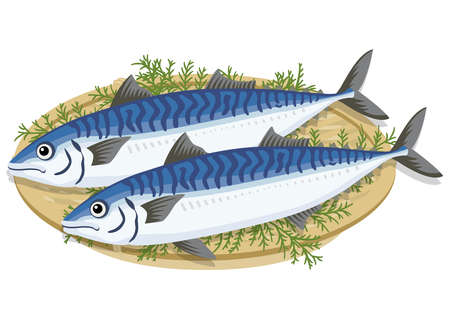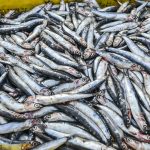1. Overview of Protected Marine and Freshwater Species
In the United States, both federal and state governments work together to protect certain fish and wildlife species that are considered threatened, endangered, or otherwise at risk. These species can live in marine (saltwater) or freshwater environments, and fishing regulations are in place to help preserve their populations for future generations.
Why Are Some Species Protected?
Protected status is usually given to species whose numbers have dropped to dangerously low levels due to overfishing, habitat loss, pollution, or climate change. By limiting or prohibiting fishing of these species, conservation efforts aim to help them recover and maintain biodiversity in aquatic ecosystems.
Who Decides Which Species Are Protected?
The U.S. Fish and Wildlife Service (USFWS) and the National Oceanic and Atmospheric Administration (NOAA) are the two main federal agencies responsible for listing and managing protected species. In addition, individual states may have their own lists of protected species based on local ecological concerns.
How Are Species Classified?
Species are classified under different categories depending on their population status and risk level. Heres a quick look at how they are typically labeled:
| Status | Description | Regulatory Body |
|---|---|---|
| Endangered | At serious risk of extinction throughout all or most of its range | USFWS / NOAA |
| Threatened | Likely to become endangered in the near future | USFWS / NOAA |
| Species of Concern | Not officially listed but still monitored due to declining numbers | State Agencies / USFWS |
Examples of Protected Species
The list of protected species varies by region and includes both saltwater and freshwater fish. Here are some examples you might encounter:
| Species Name | Environment | Status | Region Commonly Found |
|---|---|---|---|
| Atlantic Sturgeon | Freshwater/Estuarine | Endangered | East Coast Rivers (e.g., Hudson River) |
| Pallid Sturgeon | Freshwater (Rivers) | Endangered | Missouri & Mississippi Rivers |
| Chinook Salmon (Certain Populations) | Marine/Freshwater (Anadromous) | Threatened or Endangered* | Pacific Northwest, California Rivers |
| Nassau Grouper | Marine (Reef) | Threatened | Southeast U.S., Florida Keys |
*Note:
Certain populations within a species may be protected while others are not, depending on their location and condition.
The Role of Anglers in Conservation
If youre a recreational angler, understanding which fish are protected—and why—is essential. Accidentally catching a protected species can result in fines or penalties, even if it’s unintentional. Always check local regulations before heading out to fish.
Quick Tips for Responsible Fishing:
- Use up-to-date fishing guides from your state’s wildlife agency.
- If you catch a protected species by accident, release it immediately using safe handling techniques.
- Avoid fishing in areas where protected species are known to spawn or migrate.
This awareness helps protect fragile ecosystems and keeps our waterways healthy for everyone who enjoys the sport.
2. Federal Agencies and Their Roles in Fishing Regulations
When it comes to protecting fish species in the U.S., especially those that are endangered or threatened, several federal agencies work together to create and enforce fishing regulations. These agencies ensure that fishing activities are sustainable and do not harm protected marine life. Understanding who these agencies are and what they do can help you stay compliant when fishing across different states.
NOAA Fisheries (National Oceanic and Atmospheric Administration)
NOAA Fisheries, also known as the National Marine Fisheries Service (NMFS), is one of the main federal agencies in charge of managing marine resources. Their job includes:
- Monitoring fish populations in ocean waters
- Setting catch limits for both commercial and recreational fisheries
- Protecting endangered marine species like sea turtles and certain types of sharks
- Issuing permits for fishing activities involving protected species
NOAA works closely with regional fishery management councils to set rules based on scientific research. These rules often apply to saltwater fishing along coastlines and in federal waters (usually beyond 3 miles from shore).
U.S. Fish and Wildlife Service (USFWS)
The U.S. Fish and Wildlife Service focuses more on freshwater species and habitats. They handle:
- Protection of inland fish species under the Endangered Species Act
- Restoration of fish habitats like rivers, lakes, and wetlands
- Enforcement of laws such as the Lacey Act, which makes it illegal to trade in wildlife, fish, or plants that have been illegally taken or transported
- Managing national fish hatcheries and wildlife refuges
Working Across State Lines
Because many fish migrate between states or live in both state and federal waters, these agencies often work together with state wildlife departments. This cooperation helps create consistent rules across regions so anglers know what’s allowed regardless of where they’re fishing.
Federal vs. State Oversight Comparison
| Agency | Main Focus | Waters Covered | Examples of Responsibilities |
|---|---|---|---|
| NOAA Fisheries | Marine & Coastal Fish Species | Federal Waters (Ocean) | Catch limits, permits for endangered species, ocean conservation zones |
| U.S. Fish and Wildlife Service (USFWS) | Freshwater & Inland Species | Lakes, Rivers, Wetlands (Inland Waters) | Habitat restoration, hatchery programs, ESA enforcement inland |
Tip for Anglers:
If you’re planning a fishing trip across state lines or in coastal areas, check with both your state’s wildlife agency and federal guidelines from NOAA or USFWS. Having the right permits and knowing which species are protected can keep your trip legal—and enjoyable.

3. State-by-State Variation in Fishing Laws
Fishing laws in the United States can vary significantly from one state to another. While federal regulations provide a baseline for protecting certain species, each state has its own set of rules tailored to local ecosystems, fish populations, and conservation priorities. This means that what’s legal in one state might be restricted or even prohibited in another.
Why Do Fishing Laws Vary by State?
Each state manages its own natural resources based on local environmental conditions, species habitats, and fishing pressure. Some areas may have more endangered species or fragile ecosystems that require stricter controls. Others might allow more flexibility due to abundant fish populations or different ecological factors.
Factors That Influence State Regulations:
- Species presence: Not all states have the same protected species.
- Ecosystem sensitivity: Certain waters require tighter restrictions to avoid overfishing or habitat damage.
- Fishing season length: States may adjust seasons based on spawning periods and population health.
- Gear restrictions: Some states limit the type of gear you can use to protect sensitive species.
Examples of State Differences
The table below highlights how fishing laws can differ between states, particularly concerning protected species and gear usage:
| State | Protected Species Focus | Common Restrictions |
|---|---|---|
| Florida | Manatees, Tarpon | No harvest of tarpon over 40″; special permits required; seasonal closures in some areas |
| California | Steelhead Trout, White Sturgeon | Certain rivers closed during spawning; barbless hooks required in specific zones |
| Maine | Atlantic Salmon | Catch-and-release only; strict licensing rules apply |
| Texas | Paddlefish, Red Drum | No harvest allowed for paddlefish; slot limits enforced for red drum |
The Importance of Checking Local Regulations
If youre planning a fishing trip across state lines, its crucial to check the local laws before heading out. Ignorance of local regulations isnt an excuse if youre caught violating them. Many states offer easy-to-access online resources or mobile apps that provide up-to-date information on licensing requirements, catch limits, and seasonal closures.
Tips for Staying Compliant:
- Visit the official website of the states fish and wildlife department before your trip.
- Download state-specific fishing regulation guides or apps.
- If unsure about a rule, contact a local ranger station or bait shop—they often have current info.
Understanding the variation in fishing laws from state to state helps protect not just fish populations but also keeps you legal while enjoying your time on the water.
4. Permits, Licenses, and Reporting Requirements
Before you head out on the water, it’s important to know that fishing for protected species in the U.S. isn’t as simple as casting a line. Both federal and state agencies require specific permits and licenses to help conserve these species and ensure sustainable fishing practices. Whether you’re fishing in saltwater or freshwater, recreationally or commercially, understanding what paperwork is needed can save you from costly fines—and help protect our natural resources.
Why Permits and Licenses Matter
Permits and licenses are more than just legal requirements—theyre tools used by wildlife agencies to monitor fish populations and manage ecosystems. They help control how many people are fishing, what species are being targeted, and how many fish are being taken. This is especially crucial when it comes to protected species like certain types of sturgeon, salmon, or sea turtles.
Who Issues Fishing Permits?
Depending on where and what youre fishing, you might need permits from different levels of government:
| Agency | Jurisdiction | Examples of Protected Species |
|---|---|---|
| NOAA Fisheries (Federal) | Ocean waters (3-200 miles offshore) | Sea turtles, Atlantic sturgeon |
| U.S. Fish & Wildlife Service (Federal) | Freshwater habitats | Pallid sturgeon, endangered mussels |
| State Fish & Wildlife Departments | Lakes, rivers, coastal waters within 3 miles | Local populations of trout, salmon |
Types of Required Documentation
You may need one or more of the following depending on your location and target species:
- Fishing License: Required for most anglers aged 16 and older; issued by state agencies.
- Special Use Permit: Needed when targeting federally protected species.
- Endorsements: Additional permissions for activities like saltwater fishing or using specific gear types.
- Commercial Licenses: Required if youre selling your catch or operating as a charter.
The Role of Catch Reporting and Bag Limits
Certain areas also require anglers to report their catch—especially when it involves protected species. Reporting helps scientists track population trends and assess whether current regulations are working. In addition to reporting, bag limits, which restrict how many fish you can keep per day, are strictly enforced to prevent overfishing.
Common Reporting Requirements by State
| State | Reporting Method | Timeframe |
|---|---|---|
| California | Online through CDFW website or mobile app | Within 24 hours of trip completion |
| Florida | Email or FWC phone app | No later than 24 hours after landing catch |
| Maine | Maine Department of Marine Resources online portal | End of each month during season |
A Quick Tip:
If youre unsure about permit requirements in your area, check both your state’s fish and wildlife website and NOAA’s regulations page before planning your trip. It only takes a few minutes but can make all the difference for conservation—and your wallet.
5. Best Practices for Ethical and Legal Fishing
Fishing in the U.S. is not just about casting a line—its about doing it the right way. Whether youre fishing for fun or food, following federal and state regulations is key to protecting vulnerable species and keeping our waters healthy for future generations. Here are some simple but important best practices to help you stay on the right side of the law while being a responsible angler.
Avoid Protected Habitats
Certain areas are off-limits because they serve as vital breeding grounds or habitats for protected species like sea turtles, sturgeon, and certain types of salmon. Always check maps and local guidelines before heading out to fish in coastal waters, rivers, or lakes. Many state wildlife agencies offer interactive maps showing restricted zones where fishing is limited or prohibited.
Follow Slot Limits and Size Regulations
Slot limits help protect fish populations by allowing only fish within a certain size range to be harvested. This ensures that young fish have time to mature and reproduce, while larger breeders remain in the ecosystem.
| Species | Allowed Size Range | Protected Species? |
|---|---|---|
| Red Drum (Florida) | 18″ – 27″ | No |
| Goliath Grouper | N/A (Catch & Release Only) | Yes |
| Striped Bass (Northeast) | 28″ – 35″ | No |
| Atlantic Sturgeon | N/A (Endangered) | Yes |
These rules vary by state and species, so always check with your states Department of Natural Resources or Fish and Wildlife office before your trip.
Use Approved Tackle Methods
Certain gear types can harm protected species or damage sensitive habitats. For example, using circle hooks instead of J-hooks when fishing for catch-and-release helps reduce injury to fish. In many regions, barbless hooks are required when targeting endangered species or fishing in special management areas.
Tackle Tips:
- Circle Hooks: Reduce deep hooking in catch-and-release scenarios.
- No Lead Tackle: Some states ban lead sinkers to protect birds like loons and eagles from poisoning.
- Bait Restrictions: Avoid using live bait where it could introduce invasive species.
Report Encounters with Protected Species
If you accidentally catch or encounter a protected species such as a sea turtle, sawfish, or smalltooth sawfish, report it immediately to local wildlife authorities. Most agencies have hotlines or mobile apps where you can quickly log these incidents without penalty if reported promptly and properly handled.
Your Role as a Responsible Angler
You don’t have to be a biologist to make a difference. By staying informed, respecting habitat closures, using legal gear, and releasing protected species safely, youre helping preserve Americas rich fishing heritage for future anglers.
6. Consequences of Non-Compliance and How to Stay Informed
Fishing in the U.S. comes with a responsibility to follow both federal and state regulations, especially when it comes to protected species. If youre caught violating these rules, the penalties can be serious — including heavy fines, loss of fishing licenses, or even jail time in extreme cases. Understanding the consequences and staying informed can help you fish legally and responsibly.
What Happens If You Break the Rules?
Whether its accidental or intentional, catching or harming a protected species can lead to legal trouble. Heres a breakdown of some common penalties:
| Violation | Possible Penalties |
|---|---|
| Catching a federally protected species (e.g., Atlantic sturgeon) | Fines up to $50,000, possible criminal charges |
| Using prohibited gear in restricted areas | Confiscation of equipment, suspension of license |
| Failure to report accidental catch of a protected species | Civil penalties, increased inspection or monitoring |
How to Stay Updated on Fishing Regulations
Fishing laws change often based on conservation needs, seasonal patterns, and scientific research. Here are some reliable ways to stay informed:
Federal Resources
- NOAA Fisheries: Visit the official site at fisheries.noaa.gov for updates on federal regulations and species status.
- Fishery Bulletins: Sign up for email alerts from NOAA about rule changes and closures.
State Resources
- Your State’s Fish & Wildlife Department: Every state has its own website with current fishing rules. Look up your state agency for region-specific info.
- Mobile Apps: Many states offer free apps that provide real-time regulation updates and identification guides.
On-the-Ground Tips
- Tackle Shops & Marinas: Local shops often post updated regulations and can be great sources of knowledge.
- Fishing Guides: Hiring a licensed guide ensures you’re following local laws while learning from an expert.
The bottom line: always double-check the rules before heading out. Being proactive not only keeps you out of trouble but also helps protect our nation’s valuable fish populations for future generations.


